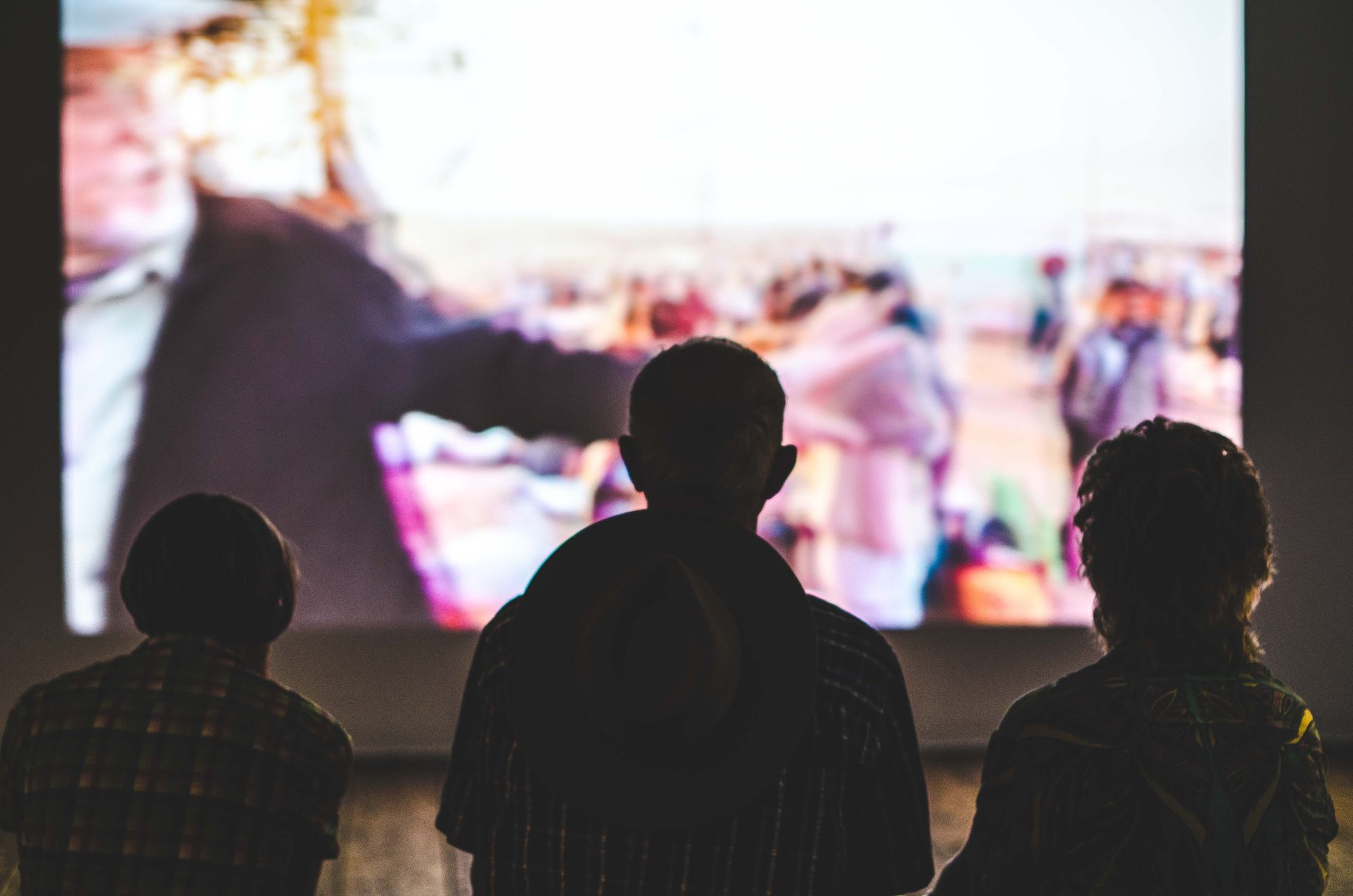Effects of the Cinematic Medium Itself
In this article, we peel back the layers of sensory artistry in movies, uncovering the profound influence it has on our emotional landscapes. Together, we will delve into the realm where sight and sound converge, allowing you to perceive the magic and wonder of movies.

Movies have a unique ability to captivate our hearts and minds, taking us on transformative journeys that extend beyond the boundaries of storytelling. While narratives play a crucial role in shaping our emotional experiences, the impact of movies goes far beyond words alone. Through the ingenious use of sensory stimuli, such as visual imagery, sound effects, and music, directors skillfully orchestrate a symphony of emotions, expanding the range of our perception and evoking profound responses from within.
Visual effects, spatial relations, timing, sound effects, and music are carefully employed by directors to guide the emotions of the audience in a specific direction. Every frame, every note, and every nuanced sound is purposefully crafted to elicit a visceral response. By skillfully intertwining sensory elements, movies create an immersive experience that resonates deep within us, transcending mere entertainment to become a powerful catalyst for emotional exploration.
If you've ever wondered about the fascinating interplay between sensory input and emotional response in movies, consider an experiment conducted by psychophysiology researchers. Take a moment to reflect on a movie that has left a lasting emotional impact on you. It could have evoked feelings of joy, vulnerability, inspiration, fear, or sadness. As you revisit this cinematic experience, pay close attention to the scenes that stir strong emotions within you. Among these scenes, you may find moments where minimal or no dialogue is present, yet the intense music serves as a driving force behind the emotional intensity.
Unique Experiment
Here, we invite you to embark on a unique experiment. Pause the movie and rewind to the beginning of the sequence. Take a ten-minute break to reset your senses, allowing yourself to detach from the auditory cues that have previously accompanied the scene. Once ready, watch the scene again, this time with the sound turned off. Notice how the absence of music transforms the emotional landscape, altering the intensity and dynamics of your response. Take note of the nuances and subtleties that may have been previously overshadowed by the power of sound. Then, for the final step, watch the scene once more, this time with the sound restored. Observe how the reintroduction of music amplifies and shapes your emotional experience, enhancing the narrative's impact on your psyche. Prepare to be astonished by the remarkable difference in emotional resonance that unfolds before you. Through this experiment, you will gain a firsthand understanding of how sensory stimulation, particularly the interplay of visual and auditory elements, can mold our emotional perception and elevate the cinematic experience to unparalleled heights.
In the following sections, we will delve deeper into the intricate relationship between sensory stimulation, emotional response, and the art of filmmaking. Drawing insights from psychology and cinematic studies, we will unravel the secrets behind the emotional powerhouses that movies have become, providing you with a new lens through which to appreciate and explore the impact of sensory stimuli in the cinematic realm.

Charles Tart explains that music can stimulate the midbrain, the seat of emotional response, which encourages access to feelings.[1] Hearing certain kinds of music, our inner control is loosened and a greater range of sensitivity to feelings is made possible. Therefore the score plays a significant role in how movies affect us, especially when they are utilized for catharsis. (see The Cathartic Way)
Carol A. Bush emphasizes in Healing Imagery & Music that music expresses universal themes and imagery and connects us with our deeper self. "It enters the brain spreading out in the corpus callosum where memory is stored. From there it can stimulate the capacity of recall, loosening a flood of psychologically significant images or related memories."[2] In the process of self-discovery through movies, the score contributes to the process of gaining access to psychological material that has not been fully conscious. (see The Evocative Way)
Music brings increased dimensionality to movies; it helps to carry our experience along, encouraging the unfolding of dynamic material. In most films music is used to intensify the impression of the visual image by providing a parallel illustration of the same idea. Referring to plays, Aristotle said that music produces emotional dispositions like those evoked under real conditions. In movies, music enhances their capacity to draw us into the action and therefore enables us to identify with the characters more than acting alone can do. When we choose certain films, this supports our process of assimilating messages that guide us in our healing and personal growth. (see The Prescriptive Way)
Unlike any other medium, music, together with the emotional capacity of the visual channel, affords the possibility of manipulation. Since we want to be "manipulated" into becoming healthy and whole, our choice of movie is a big factor when we use the prescriptive way. By selecting the appropriate films we can learn to improve ourselves.
This assumption is supported not only by psychology but also by theories of learning and creativity. Research about accelerated learning indicates that acquisition and retention are enhanced when, in addition to the use of stories and metaphors, multiple senses are engaged during the learning process. Howard Gardner suggests that we have multiple "intelligences."[3] The more of these intelligences we access, the faster we learn, because by doing so we employ different methods of information processing. Sturdevant hypothesizes that watching movies can engage most of these intelligences:
1) The film's plot engages our logical intelligence
2) Script dialogue engages the linguistic intelligence
3) Pictures, colors, and symbols on the screen engage the visual-spatial intelligence
4) Sounds and music engage our musical intelligence
5) Storytelling engages the interpersonal intelligence
6) Movement engages the kinesthetic intelligence
7) Self-reflection or inner guidance, as demonstrated especially in inspirational films, engages the intrapsychic intelligence
The viewer accesses the last three intelligences not directly but through identification with the characters.
The above demonstrates how movies speak to us on a variety of psychological and physiological channels; and the effect is synergistic, all of which further elevates cinema's potential for healing and transformation. Film characters often model strength, courage, and other positive qualities, helping us through life's difficult times. Movies also connect with us on a mythological level, spurring us to live from our deepest, wisest self. Many of us naturally find that certain films jog us out of unhealthy patterns of emotion and thought. If specific movie recommendations and some guiding exercises are added, this effect can be utilized and significantly enhanced.
Endnotes:
1. Charles Tart, State of Consciousness (New York: E. P. Dutton, 1977), pp. 14-16.
2. Carol A. Bush, Healing Imagery & Music: Pathways to the Inner Self (Portland, OR: Rudra Press, 1995), p.32
3. Howard Gardner, Frames of Mind: The Theory of Multiple Intelligences (New York: Basic Books, 1993).
